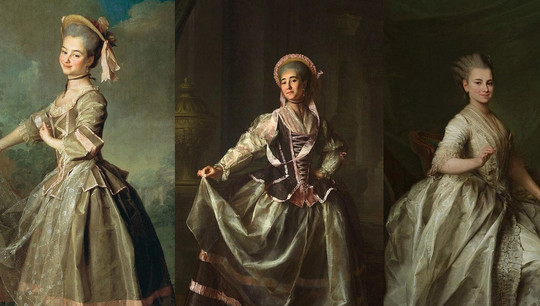Ural Federal University Launches Virtual Museum Showcasing Russia-Britain Relations
UrFU specialists prepared and launched a virtual museum “The Age of Change. Intellectuals, power and society in Great Britain and Russia in the 17th-18th centuries”. The exhibits contain information about the two cultures of the time on eight key aspects covering a wide range of topics: worldview, political and religious discourse, attitudes to marriage, childhood, life and death, and others. The work was supported by the Russian Science Foundation (Project No. 22-18-00488).
“Chronologically, we focus on the transitional period from the Middle Ages to the New Age. It is an era of transformation of the two cultures, of tumultuous changes, of borrowing, of dreaming of the new. Intellectuals of that time – that’s 1-2% of the whole society both in Russia and in Great Britain – made a revolution: created a new state, carried out extensive reforms in education, public administration, etc. This is the period when the Russian and British empires were born, which is also an important point for comparative analysis”, explains Veronika Vysokova, one of the curators of the project and professor of the Department of Modern and Contemporary History at UrFU.
A large team of historians, philologists, and specialists in regional studies of the Ural Institute of Humanities of the UrFU worked for 2,5 years on the creation of the museum (its content and technical components). It took the same time to collect and analyze the material. As sources, the researchers used official documents (including archival ones), articles in newspapers of the time, legislative acts, private correspondence, old printed and handwritten books, novels, essays, and others. As a result, they prepared more than 200 articles and published about 600 illustrations.
“We found out that in Britain and Russia in the 17th-18th centuries, there were a lot of similarities, which is probably understandable – people everywhere are people with their aspirations for the future, and hopes for a long and happy life. On the other hand, there are many differences. For example, the moral and ethical canon. In Great Britain, at the turn of the 17th and 18th centuries, a rationalist moral and ethical model was formed, which already in the 18th century gave rise to the idea of the British as a ‘nation of negotiators’. Even though Russia went through a very painful period of transition in the XVII-XVIII centuries, it retained its spirituality and remained more faithful to its national roots than the British. This, in my deep conviction, allows Russia to remain a spiritual and cultural leader in the world today”, believes Veronika Vysokova.
Alexey Popovich, co-author of the project and Junior Research Associate at the Laboratory of Primary Sources Research of the UrFU, explains the formation of imperial identity in Russia at that time through the adaptation of spiritual values and points out that on the intellectual level, imperial ideas were discussed long before 1721, when after the end of the Northern War and the annexation of new lands Peter the Great was given the title of emperor.
“The annexation of the left bank of Ukraine also gave cause for reflection: on the one hand, it was necessary to adapt to the culture of the Malorussia, and on the other hand, to adapt ourselves. At that time the country had several ways of development. The first was philhellenism: according to the ideas several church intellectuals of that time, Russia should become the center of a new Byzantine civilization and liberate the Orthodox peoples from the oppression of the Turkish Sultan. But Peter I chose a different path – the European model of empire, which was also reflected in the attitude to the church and the role of the state. Thus, in analogy with other colleges, Peter created the Synod to govern the Church, which had lost its administrative independence, and to regulate everyday piety. In essence, the state interfered in people’s private lives, dictating how a person should talk to God, participate in rituals, and perform other practices”, the researcher suggests.
From the exposition materials of the virtual museum, one can also learn how new spaces were developed, new statehood was formed, people’s ideas about life and death changed, scientific knowledge was formed, and the man of the new age was formed.

